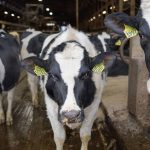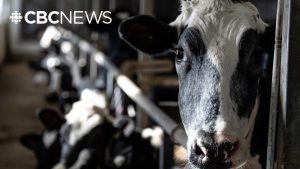
Ten years ago, that number hovered near five per cent. Western Canadian dairy farmers are the biggest adopters with between 25 and 50 per cent of farms in different provinces using robots to milk cows. In Ontario and Quebec, where the majority of dairies are located, about 20 per cent of farms employ robot milkers.
What’s fuelling the increasing speed of robot adoption across the Canadian dairy landscape? At the top of the benefits list is automation’s ability to replace human labour, says Dr. Trevor DeVries who leads dairy robot research at the University of Guelph.
“For a lot of farmers who adopt robots, they’re not necessarily saving those hours, but it’s changing the type of labour and the flexibility of that labour,” says DeVries. “Where we’ve asked producers about the change that occurs when they move to robotic milking, a lot of it comes back to how that change affects their life and their lifestyle, and making their time more flexible. They’re not on such a rigid schedule. And then they can spend more time on other aspects of management of their cows as well.”
DeVries notes the dairy farmers he surveys are also quick to point out how cows benefit from the voluntary nature of robot milking systems. Producers note how cows like the added autonomy they have in the robotic milking process and it pays off in overall production and herd health.
But researchers and farmers still have a lot to learn when managing cows in robotic systems. During his presentation last month at the South Western Ontario Dairy Symposium at Woodstock, Ont., DeVries looked at key aspects of optimizing health and production on robotic dairies. In this interview with RealAgriculture’s Bernard Tobin, DeVries says the first thing farmers must be mindful of is whether their cows can get milked when they choose to visit the robot. In these operations, milking frequency is typically driven by barn design, traffic flow (a free-traffic system versus a guidance system) and stocking density. (Story continues after the interview.)
DeVries also noted the impact lameness can have on creating “fetch cows” that need to be encouraged to visit the robot. He cited a 2019 Ontario dairy benchmark study that looked at 75 robotic herds in Ontario, which indicated a high variability in lameness across herds. Overall, the study revealed that 25 per cent of cows had clinical lameness, but the level of lameness varied from 10 to 60 per cent across all farms.
“Every five-percentage-point increase in lameness was about one kilo less milk,” says DeVries. “If you multiply that kind of range out, that’s about an 11-kilogram difference in milk yield between those herds with the lowest percentage of lameness and the herds that had the highest percentage of lameness.”
Overall, DeVries stressed that cow health and productivity are optimized in robotic systems when producers ensure cows have time and space to milk voluntarily; when good comfort and clean environments are maintained; and continuous feed access and good nutritional management is ensured.
What does the future hold for robot milking? DeVries says he sees no slowdown in adoption of the technology and feels producers will see more technology that will further enhance how they can utilize robots. “What we’re seeing is actually more ancillary type technologies also being added. And I think that’s where we’re gonna see more development in the future as well — more automation in feeding, in cow behaviour monitoring… and then the integration of these systems as well. I think that’s really the future as we’re going to see it in the dairy industry.”




















